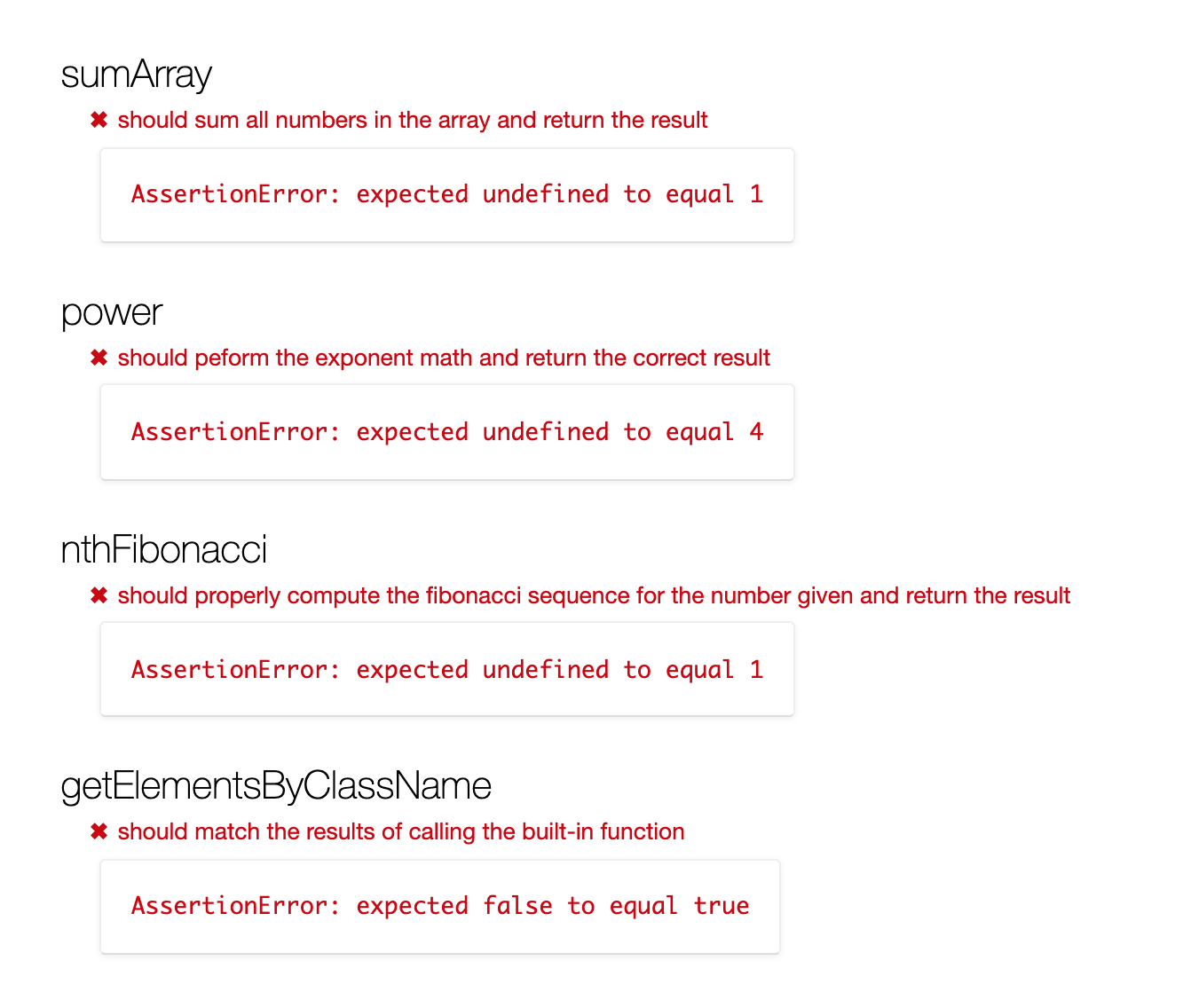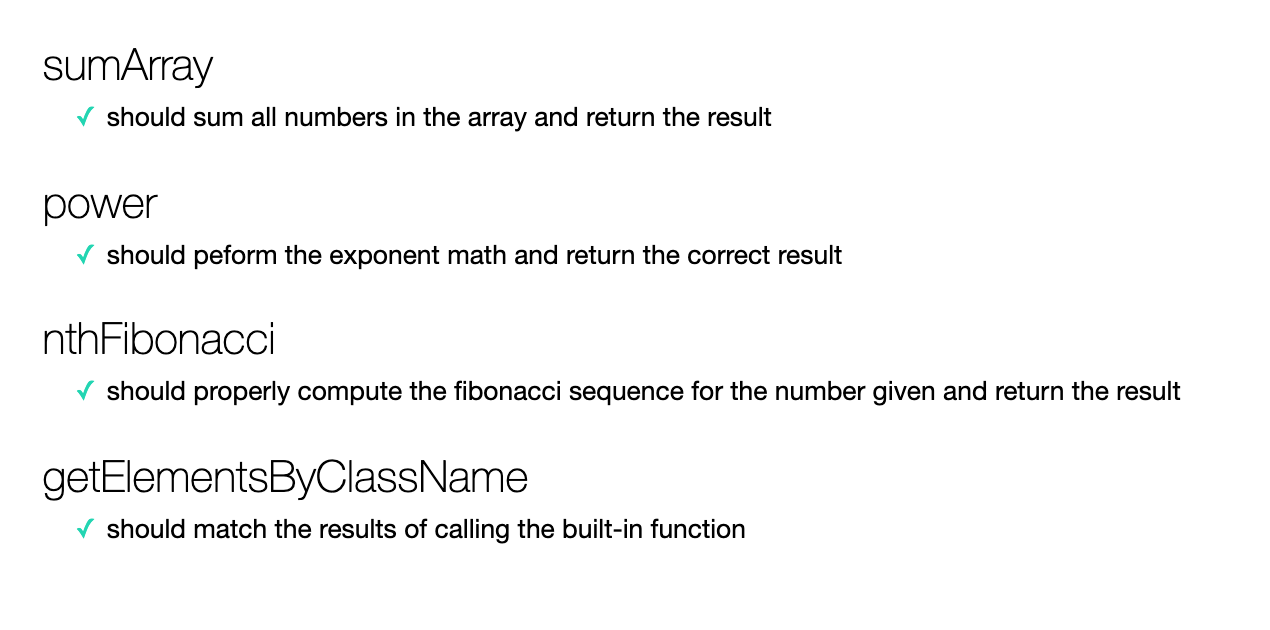You're here to solidify your understanding of recursion -- a fundamental programming concept -- in JavaScript.
IMPORTANT: Completion of this workshop is no guarantee of admission into the Hack Reactor immersive program, nor does it have any influence in the admissions process.
This workshop is designed for folks in the midst of studying intermediate-level JavaScript who have a few months of foundational experience. You will be expected to understand the basics of the Document Object Model (DOM) as applied to HTML.
No textbook is required for this workshop. All materials are included in this GitHub repo.
Laptop, Google Chrome browser and a text editor. If you do not have a text editor, we recommend Visual Studio Code, Sublime Text, or Atom.
The lesson slides for this workshop can be found here.
Run the SpecRunner.html file in a browser. This document currently shows 4 failing tests.
- The
specfolder holds all the failing tests that are being displayed in SpecRunner.html. - The
srcfolder holds the functions that are being called to run the tests. - Your task is to edit the files in
srcto complete the functions and get the tests to pass. - These files are just javascript files so you can use
console.logto help debug and inspect these functions.
Recursion is a technique for solving problems wherein a function makes calls to itself. By doing so, it can complete a small amount of the processing, and delegate the rest of the problem to the recursive calls.
Consider the following function:
var eat = function(meal){
console.log('meal before bite:', meal);
console.log('now eating', meal.pop());
if(meal.length){
eat(meal);
} else {
console.log('done with the meal!');
}
}Which produces this output:
eat(['soup', 'potatoes', 'fish']);
// => meal before bite: ["soup", "potatoes", "fish"]
// => now eating fish
// => meal before bite: ["soup", "potatoes"]
// => now eating potatoes
// => meal before bite: ["soup"]
// => now eating soup
// => done with the meal!You can use recursion on problems where smaller parts of the problem look the same as the larger problem as a whole.
In this sprint, you'll be practicing writing recursive functions, building up to the reimplementation of a JavaScript browser method that involves recursion (getElementsByClassName). In so doing, don't use the things you're reimplementing, or any other built-in shortcuts that make these problems trivial. (You'll probably know if you're cheating, but feel free to ask us if you're not sure.)
(Curious fact: many browsers don't have any of these functions in them, and people do need to reimplement them. When we reimplement new browser functionality in older browsers, it's called a "polyfill".)
More detailed instructions and examples for each exercise can be found in the individual .js files in the src folder.
- Implement
sumArraywith your own code insrc/sumArray.js
- Implement
powerwith your own code insrc/power.js
- Implement
nthFibonacciwith your own code insrc/nthFibonacci.js
- Implement
getElementsByClassNamewith your own code insrc/getElementsByClassName.js- You should use
document.body,element.childNodes, andelement.classList
- You should use
- NOTE: You may also use methods from the underscore library for assitance, but are not required to do so.
- You can view the MDN documentation for getElementsByClassName here
You should throroughly read all of code in front of you and aim to understand line-by-line what is happening.

